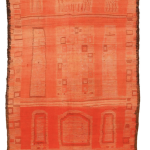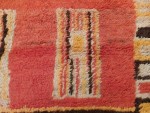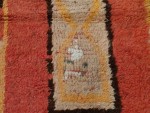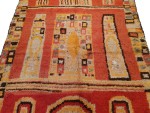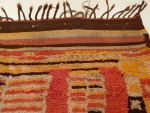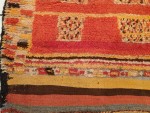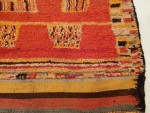Rug with Abstract Motifs
Rugs named after the town of Boujad were woven by Arab tribes, who are principally located on the southwestern foothills of the Middle Atlas mountains, in a region which allowed a close contact with the Arab people inhabiting the Haouz (the plains around Marrakech), thus influencing each other in the structural characteristics as well as in terms of designs.
Boujads represent one of the most creative and colourful facets of the Moroccan rug tradition. In this relatively early example, the orange-red background is divided into rectangular compartments containing separated clusters of motifs such as dots, lines and squares, which are considered the building blocks of the abstract language of Moroccan woven art. A fine, dense knotting results in an elegant surface, allowing the composition to be expressed with clarity.The striped weft-faced ends as well as the extra-weft side indentations are also typical of the weavings of the neighbouring Rehamna tribes.

